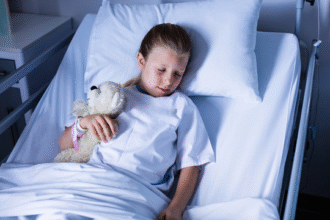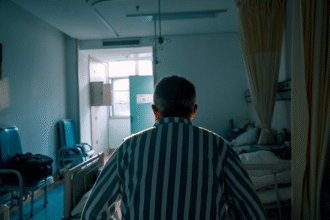Shingles (Herpes Zoster)
Shingles is a reactivation of varicella‑zoster virus (VZV), the virus that causes chickenpox. After chickenpox, VZV lies dormant in sensory ganglia and can reactivate years later. The rash is typically unilateral, in a single dermatome, and often very painful.
How Contagious Is It?
- People with shingles can transmit VZV to those without immunity, causing chickenpox (not shingles). Transmission is mainly by direct contact with fluid from blisters; risk drops once lesions crust.
- Cover the rash and avoid contact with pregnant people without immunity, newborns, and the immunocompromised until all lesions are crusted.
Symptoms and Course
- Prodrome: localized burning/tingling/itching or pain.
- Rash: clusters of clear vesicles on a red base along a dermatome; may involve face, trunk, or limbs; typically heals in 2–4 weeks.
- Systemic symptoms (fever, malaise) may occur. Pain can persist after healing (postherpetic neuralgia, PHN), especially in older adults.
When to Seek Urgent Care
- Eye involvement (forehead/eyelid lesions, eye pain, light sensitivity) — ophthalmology evaluation immediately.
- Ear involvement with facial weakness, ear pain, or hearing changes (Ramsay Hunt syndrome).
- Widespread/disseminated rash, severe immunosuppression, pregnancy, severe or escalating pain, or signs of bacterial infection (spreading redness, pus, high fever).
Treatment
Start antiviral therapy as soon as possible — ideally within 72 hours of rash onset (earlier is better). Treat later if new lesions are appearing or complications are present.
- Antivirals (adults; typical examples):
- Valacyclovir 1 g three times daily for 7 days.
- Famciclovir 500 mg three times daily for 7 days.
- Acyclovir 800 mg five times daily for 7–10 days.
- Pain control:
- Acetaminophen and/or NSAIDs for mild–moderate pain; short course of stronger analgesics if severe.
- Neuropathic pain agents (e.g., gabapentin, pregabalin, or tricyclic antidepressants) if pain is significant or persistent.
- Topical lidocaine 5% patches over painful intact skin; high‑concentration capsaicin is a clinic option once healed.
- Corticosteroids: may reduce acute pain when used with antivirals in select adults; not for everyone and not as monotherapy. Avoid in immunocompromised unless specialist‑directed.
Skin Care and What to Avoid
- Keep lesions clean and dry; use cool compresses for comfort. Calamine or Burow’s solution (aluminum acetate) soaks can help weeping areas.
- Avoid picking/scratching; trim nails. Gentle bathing is fine; pat dry.
- Do not apply alcohol, vinegar, herbal powders, or animal products to lesions; they can irritate and delay healing.
- Sunlight can irritate active lesions — protect the area rather than sun‑exposing it.
Complications
- Postherpetic neuralgia (PHN): pain persisting >90 days after rash onset; risk increases with age and severe acute pain.
- Ophthalmic zoster: keratitis, uveitis, and vision loss if untreated.
- Ramsay Hunt syndrome: facial nerve palsy with ear rash/pain and hearing issues.
- Bacterial superinfection of skin lesions.
Prevention — Vaccination
- Recombinant zoster vaccine (RZV, e.g., Shingrix) is recommended for adults ≥50 years and for immunocompromised adults ≥19 years, even if they’ve had shingles before. Two doses reduce the risk of shingles and PHN substantially.
Return to Normal Activities
- Resume normal contact when all lesions are crusted and covered, and you feel well enough to participate.
Educational information only; not a substitute for medical advice. For diagnosis and prescriptions, consult a clinician.






